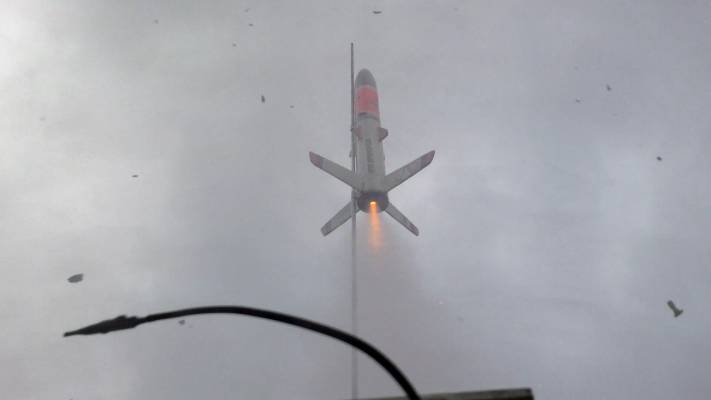The Viper: A '70s kit offered to Estes Aerospace Club (EAC) members. It uses T motors. It is a good, economical flier with parachute recovery. The small 12-inch parachute is a good choice for this rocket, since it is limited to A-power only. I wouldn't waste the time using 1/4A motors unless it's extremely windy or you have an extremely small field, the larger motors are so much more satisfying.
This particular Viper was painted with Purple and Orange instead of the Purple and Yellow. I suppose that was because I had orange dope and no yellow, but that was 35 years ago, who knows?
This rocket was later given my "Iris" modification, which extends the body tube about 5 inches above the streamer / parachute bay, and allows for a payload with an Altimeter One to measure altitudes. With it’s most powerful A motor, I can’t seem to get this above the 200-foot mark. (Iris is named after the Greek god of the rainbow. She is a messenger of the gods, linking the gods with humanity.) This rocket has flown higher than the Cape Hatteras Lighthouse in NC, the tallest lighthouse in the USA.
| Flight Date: | 2012-04-01 |
| Rocket Name: | EAC Viper |
| Kit Name: | Estes - E.A.C. Viper {Kit} (0820) [1972-1986] |
| Flyer's Name: | Rich DeAngelis |
| Motors: | A10-3 |
| Launch Site: | Penn Manor School Lancaster PA |
| Actual Altitude: | 146 Feet |
First flight of the day. Weather was cool, cloudy and a bit breezy. The Viper flies well in winds, but I chose the A10 over the A3 to get up quickly before the winds could affect the flight too much. The one-second burn accelerated the rocket rapidly straight up, with the highest recorded peak Gs for this rocket ever at 19.7 Gs.
Average acceleration for the burn was 2.4Gs. It reached a speed of 51 mph and coasted for 2.2 seconds to an apogee of 146 feet. After descending 22 feet in another 1.2 seconds the ejection charge fired to deploy the parachute, which was left inside-out on one shroud line, so it descended a bit fast although safely at 12 mph.
It landed after a duration of 11.3 seconds within a hundred feet or so. Good first test flight. As usual, the Estes A10 produced about 33 feet less in altitude and flew about 12 mph slower than the A3, because it has only about 90% total Ns power of the A3.
| Stage | Motor(s) |
|---|---|
| 1 | Estes A10T-3 |
 |
 |


